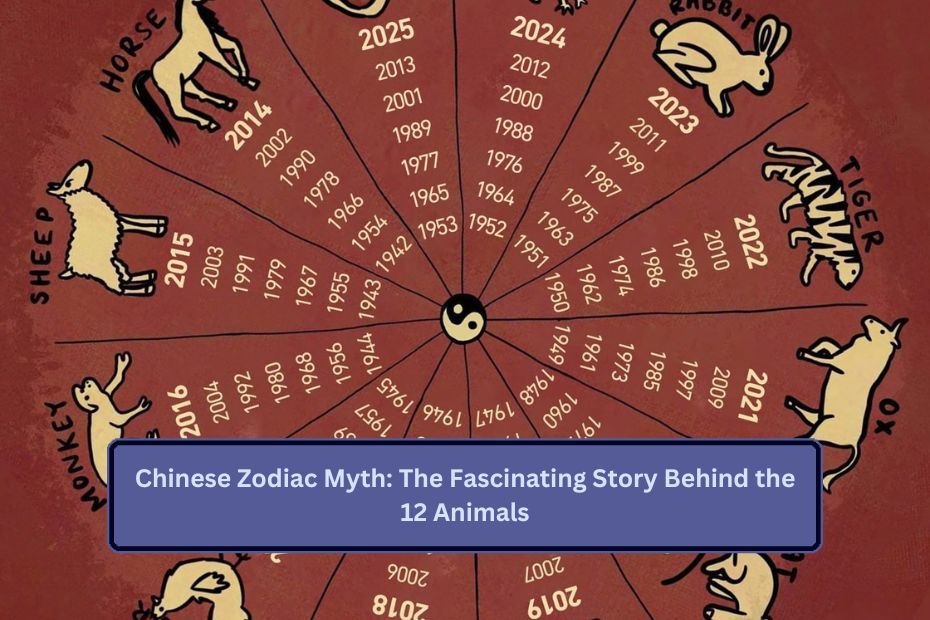The Chinese zodiac is one of the oldest and most fascinating systems of astrology in the world. It is based on a myth that has been passed down for thousands of years, involving a race, animals, and a great emperor. This myth explains why there are 12 animals in the Chinese zodiac and why each year is represented by one of them.
The Great Race of the Animals
Long ago, the Jade Emperor, the ruler of all gods in Chinese mythology, wanted to create a system to measure time. He decided to have a race to determine the order in which the animals would be placed in the zodiac. He invited 13 animals to participate in the race, but there was a catch—the first 12 animals to cross the finish line would be chosen as the zodiac animals, while the 13th animal would be left out.
The Animals in the Race
According to the legend, the Jade Emperor announced that the first 12 animals to cross the river would be chosen to represent the years in the Chinese zodiac. Among those who entered the race were the Rat, the Ox, the Tiger, the Rabbit, the Dragon, the Snake, the Horse, the Sheep, the Monkey, the Rooster, the Dog, and the Pig.
The race was long and difficult, but each animal used its own strengths to try to win. The Rat, being small and quick, teamed up with the Ox. When the Ox was about to cross the river, the Rat jumped ahead and won the race. The Ox, who came second, was not happy but accepted its position.
The Order of the Zodiac
Here’s how the animals finished the race:
- Rat: The clever and quick Rat won by hitching a ride on the Ox and jumping ahead at the last moment.
- Ox: The strong and hardworking Ox came in second place.
- Tiger: The fierce Tiger came third, using its strength to push through the waters.
- Rabbit: The Rabbit, quick and agile, hopped across the river on stones and logs, securing fourth place.
- Dragon: The powerful Dragon could have won the race but stopped to help others, which made it take fifth place.
- Snake: The Snake, sneaky and sly, slithered across the river and took sixth place.
- Horse: The Horse came seventh, galloping across the river at high speed.
- Sheep: The Sheep, calm and peaceful, came in eighth place.
- Monkey: The playful Monkey used its cleverness to jump from tree to tree, finishing in ninth place.
- Rooster: The Rooster, determined and confident, came tenth.
- Dog: The Dog, although fast, took its time playing and arrived in eleventh place.
- Pig: The Pig, which had eaten along the way, came last in the race.
The Meaning Behind the Animals
Each of the 12 zodiac animals is believed to represent certain personality traits. People born in each year are thought to share the qualities of their animal. For example:
- Rat: Intelligent, clever, and quick-thinking.
- Ox: Strong, reliable, and hardworking.
- Tiger: Brave, fierce, and independent.
- Rabbit: Gentle, quiet, and kind.
- Dragon: Ambitious, powerful, and confident.
- Snake: Wise, secretive, and perceptive.
- Horse: Energetic, independent, and free-spirited.
- Sheep: Peaceful, gentle, and thoughtful.
- Monkey: Playful, curious, and intelligent.
- Rooster: Honest, reliable, and punctual.
- Dog: Loyal, faithful, and protective.
- Pig: Generous, honest, and hardworking.
Why the 13th Animal Was Left Out
There is a story about the 13th animal, the Cat, who was very upset about not being included in the race. In some versions of the myth, the Cat was friends with the Rat, but the Rat tricked the Cat into missing the race. That’s why, in some Chinese cultures, people born in the Year of the Rat are believed to be enemies with people born in the Year of the Cat.
The Chinese zodiac myth is more than just a story about animals racing. It represents the values of determination, intelligence, and perseverance. The story has also been used for centuries to predict the personalities and fortunes of people based on their birth year. Whether or not you believe in astrology, the Chinese zodiac continues to play an important role in Chinese culture and beyond, bringing people together to celebrate their heritage and learn more about themselves.
Visit Home

